Google Ads recently unveiled a groundbreaking keynote that sets the stage for the future of digital marketing. With innovations centered around artificial intelligence (AI) and enhanced advertising tools, the event highlighted how businesses can harness Google’s AI capabilities to drive next-level growth. This article dives deep into the key takeaways from the keynote, exploring the transformative role of AI in search, creative development, shopping, measurement, and more.
Embracing the AI Revolution in Marketing
In an era marked by rapid technological transformation, AI stands at the forefront of marketing innovation. The keynote emphasized that AI is no longer a futuristic concept but a current reality reshaping how businesses operate. Early conversations about AI focused on understanding what it is and whether it truly works. Today, the dialogue has shifted to practical applications: how AI can help teams boost efficiency, identify valuable customers, and enhance profitability.
“In nearly 20 years at Google, I’ve never been as energized or optimistic about how we can help your business as I am now.”
Google’s long-standing investment in AI research is paying off with breakthroughs such as the Gemini model series, which combines native multimodal capabilities, long-term engagement, and AI agents. For example, the ASTRA project demonstrates an AI agent that can see, hear, remember, and communicate in real time, opening new possibilities for interactive marketing experiences.
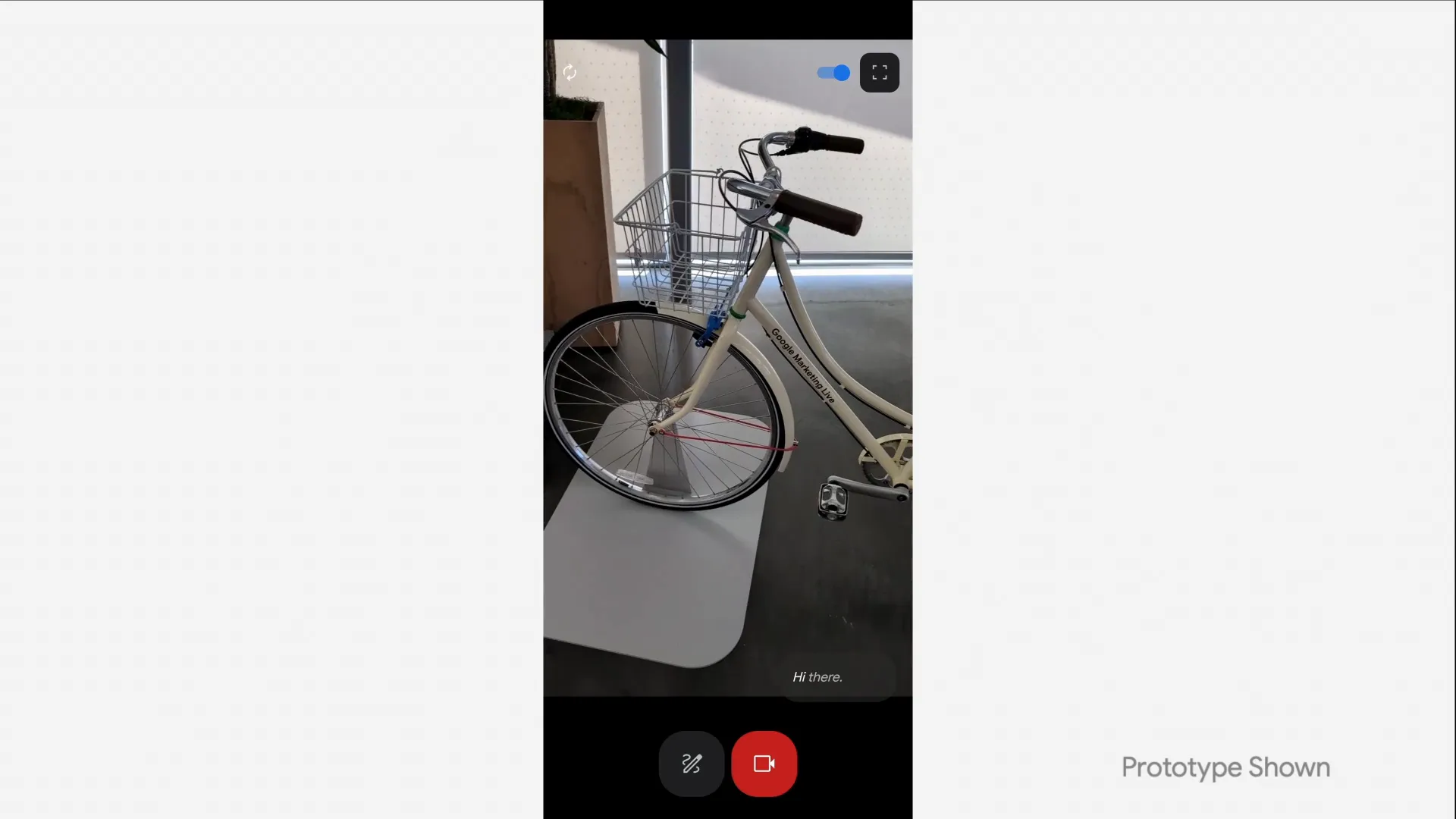
Performance Max and Enhanced AI Infrastructure
One of the keynote’s highlights was the focus on Performance Max (PMax), Google’s all-channel marketing tool powered by AI. PMax maximizes campaign results by leveraging inputs such as data, creative assets, and settings to optimize performance across Google’s entire advertising ecosystem. The keynote showcased how PMax integrates seamlessly across Google channels, providing advertisers with unparalleled reach and efficiency.

Central to these capabilities is Google’s robust AI infrastructure, which has improved efficiency by over 100 times compared to 18 months ago. This infrastructure supports over 5 billion users across 15 products, applying AI at scale to enhance consumer experiences and deliver measurable business value.
“Our AI models and algorithms are faster, more secure, and more reliable, enabling unprecedented efficiency gains.”
Google also highlighted its commitment to responsible AI development, working closely with regulators, policymakers, and civil society to ensure privacy and brand safety, a legacy exemplified by being the first company to earn MRC certification for brand safety.
Revolutionizing Search with AI
Search remains a cornerstone of digital marketing, and Google is elevating it with AI-powered features designed to meet evolving consumer expectations. Approximately 15% of daily search queries are entirely new, underscoring the limitless curiosity of users and the need for smarter search technologies.

AI Overviews, introduced last year and now available across the U.S., provide users with richer, multi-perspective summaries of search topics, including quick overviews and links to in-depth content. These overviews have been shown to increase both search usage and satisfaction, while clicks from these experiences tend to be of higher quality, with users spending more time on linked sites.
Four Key Search Trends Powered by Generative AI
- Precision Search: Longer, more specific queries are growing at 1.5x the rate of short queries, allowing users to find highly tailored information. For example, a user can now ask, “How to pick the right men’s running shoes for high arches?” and receive precise, relevant answers.
- Simplifying Complex Searches: AI can now handle multi-step queries like “What are good places to take kids in Dallas, and where are the nearby ice cream shops?” delivering consolidated, smart answers in seconds instead of requiring multiple searches.
- Beyond Text Search: Visual and video searches are becoming essential, with Google Lens seeing 12 billion monthly searches and one in four visual searches indicating purchase intent. Soon, video search will allow users to find products and information based on what they see in videos.
- Exploratory Search Experiences: Consumers often seek inspiration rather than quick answers. AI-powered search pages cluster content into thematic groups, helping users discover new ideas and options, such as exploring dining options in Monterey, California, with suggestions like “seafood paradise” or “sunset view restaurants.”
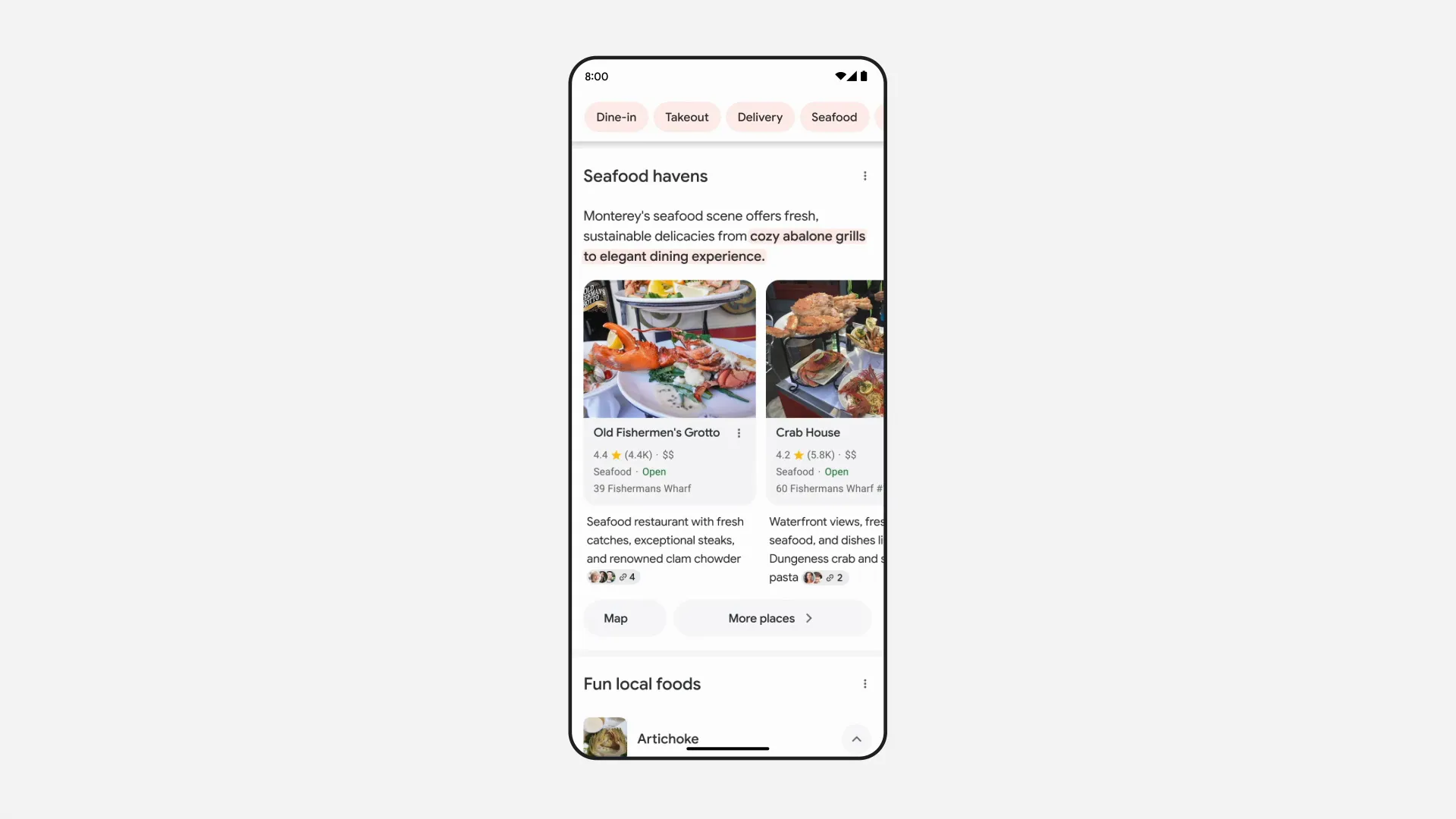
YouTube: The Powerhouse of Video and Demand Generation
YouTube continues to dominate as the top streaming platform in the U.S., with 3 billion hours of content watched daily on connected TVs and 70 billion short video views monthly. The keynote emphasized the critical role of creators and the transformative potential of generative AI tools designed specifically for them.
Google introduced powerful AI tools like Imagine 3 (text-to-image), Music Sandbox, and VEOL (video generation), which enable creators to produce high-quality content more efficiently. Soon, VEOL will integrate with short videos to unlock new creative possibilities for brands and creators alike.
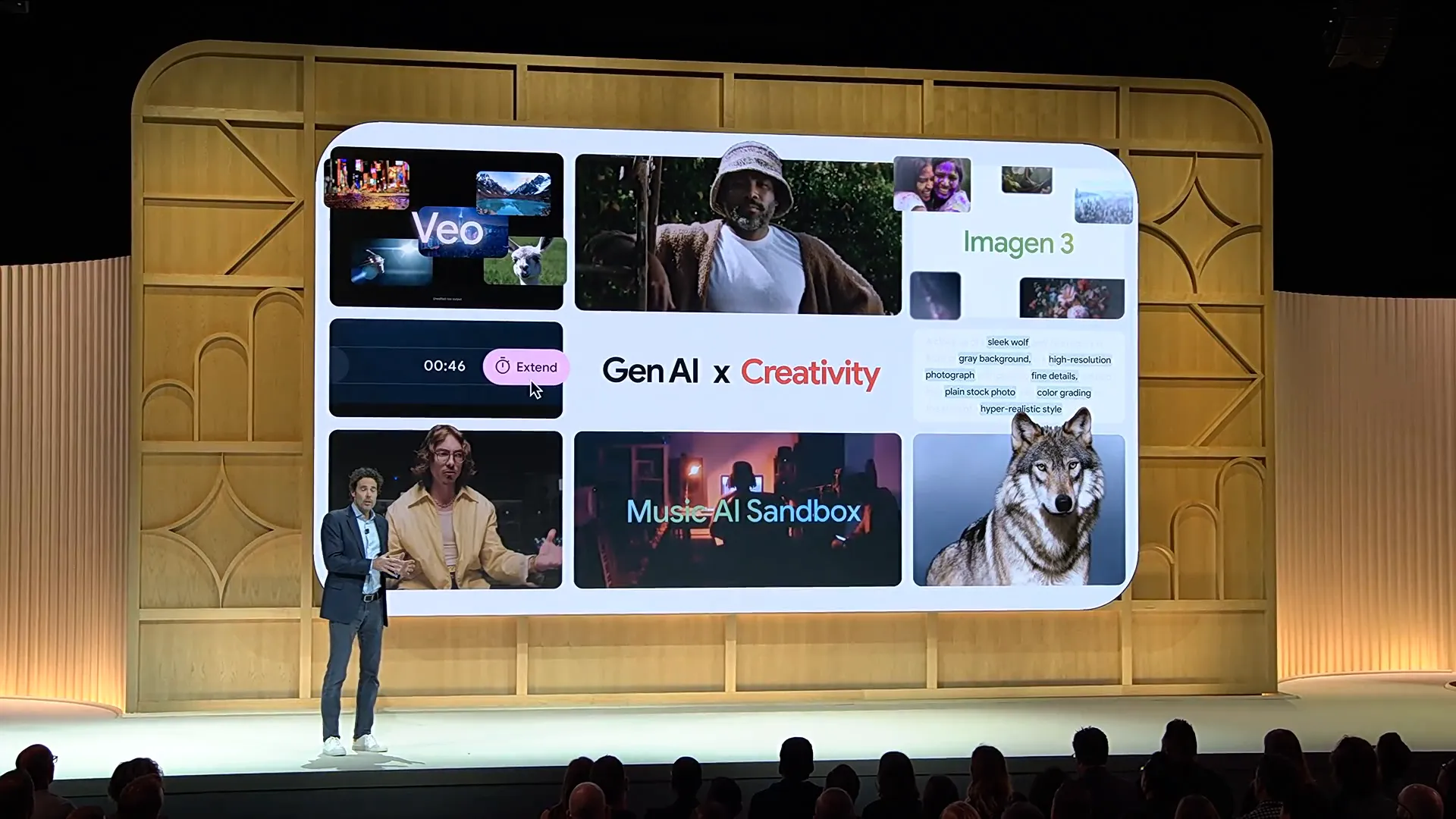
For advertisers, this means a richer content ecosystem with more engaging videos attracting larger audiences, ultimately enhancing advertising impact and return on investment.
Demand Gen and BrandConnect
Demand Gen campaigns, launched last year, leverage YouTube, Discover, and Gmail to create immersive video storytelling that drives brand awareness and conversions. With access to over 3 billion monthly users, Demand Gen is expanding its capabilities to platforms like Display & Video 360 and Search Ads 360.
International fitness brand Les Mills shared how Demand Gen boosted their registrations by 561% and improved cost efficiency by 72% through compelling visual storytelling on Google’s immersive platforms.

Additionally, BrandConnect enables advertisers to promote creator-made videos as co-branded ads, tapping into the trust audiences have in creators and amplifying brand reach. Pandora jewelry exemplified this approach, combining YouTube ads with first-party data and AI signals to double their ROAS and connect with younger audiences.
Shopping Innovations: Bringing Products to Life
Shopping on Google and YouTube continues to evolve with AI-powered features that enhance product discovery and purchase confidence. Product Studio, launched last year, allows retailers to create customized product scenes and remove cluttered backgrounds, improving image quality and shopper engagement.
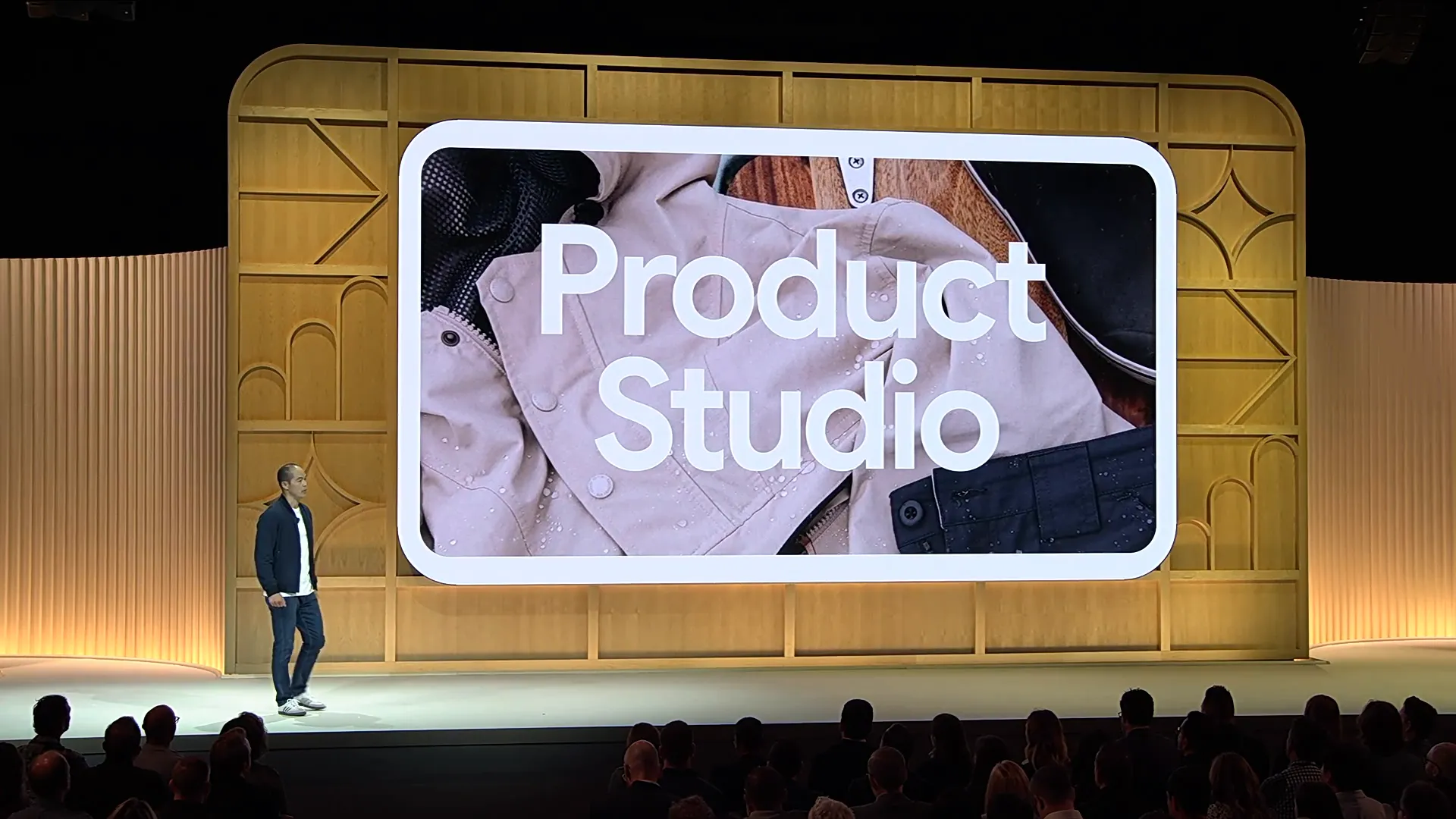
New updates enable creating brand-consistent visuals by generating scenes that match a retailer’s unique style, plus transforming static images into eye-catching videos in seconds. This dynamic content helps meet modern shoppers’ expectations for immersive and informative experiences.
Google also announced 3D shopping ads, starting with shoes, allowing shoppers to view products from every angle online, making browsing feel like window shopping. Virtual try-on technology is expanding to clothing, enabling shoppers to see items on models of various body types directly from ads.
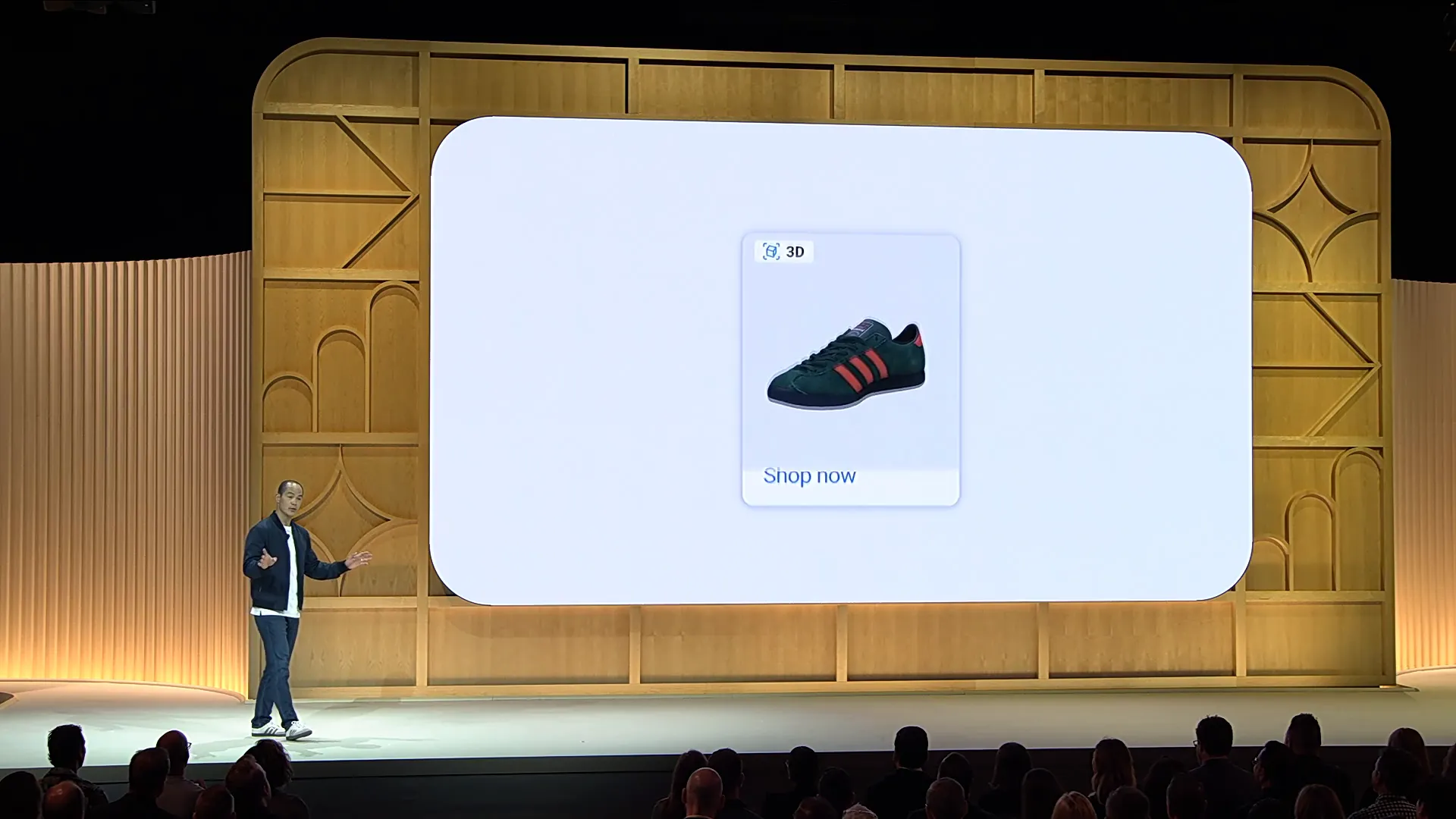
To further enhance shopping ads, AI will soon highlight key product attributes from descriptions and reviews, making ads more informative and attractive. These innovations aim to build stronger connections between brands and consumers, simplifying the path from discovery to purchase.
Data: The Backbone of AI-Driven Marketing
Data is fundamental to effective AI marketing. Good AI requires extensive, high-quality first-party data to understand your business, customers, and goals. Collecting, protecting, and utilizing this data are critical steps that Google is simplifying with tools like the Google Ads Data Manager.
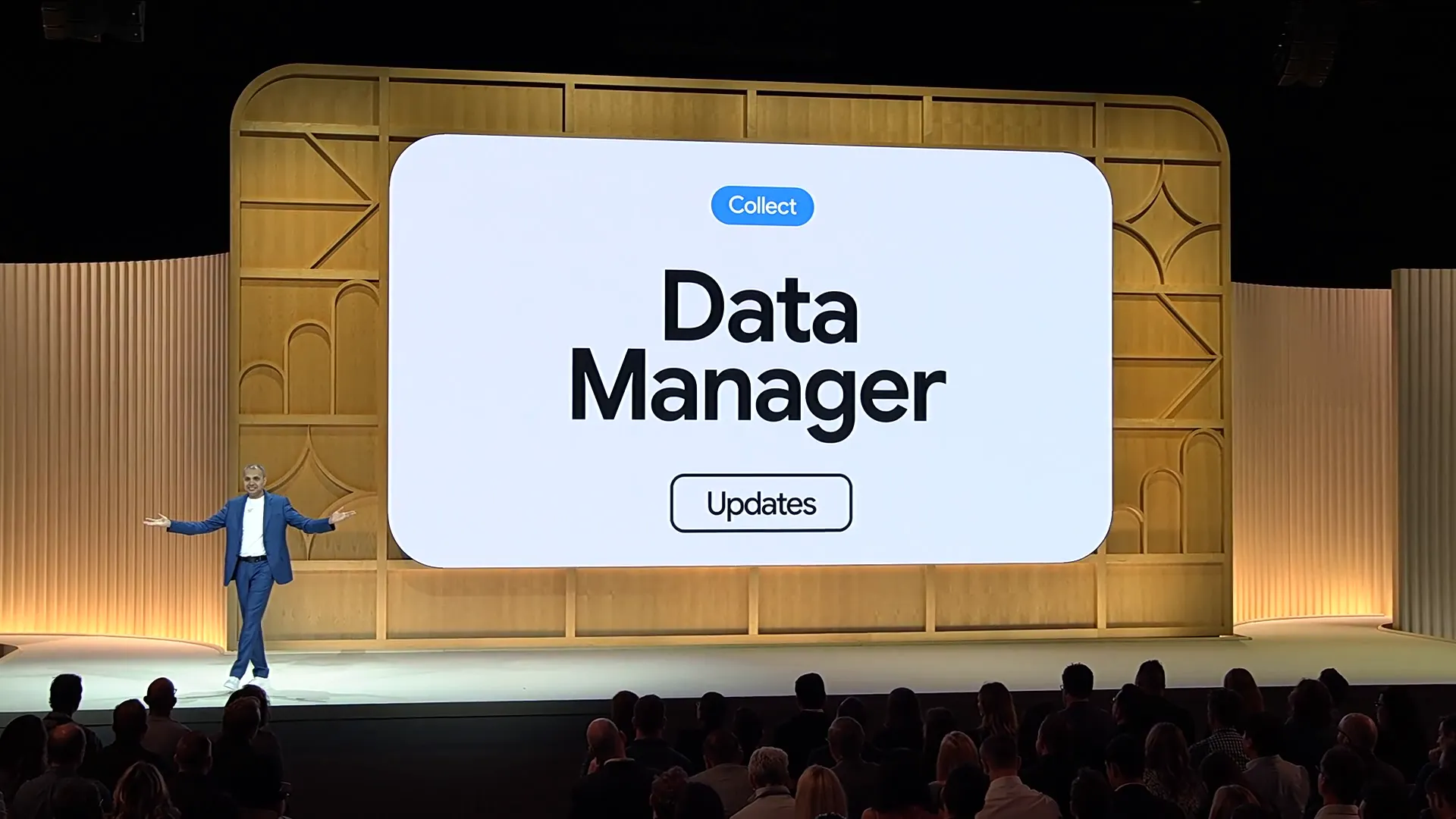
Data Manager consolidates first-party data from multiple sources such as Salesforce, HubSpot, Shopify, and Zoho, eliminating manual data cleaning and uploads. Alongside, Google is introducing testing diagnostics within Google Ads to identify data gaps and optimize campaign performance with guided workflows.
Security and privacy are top priorities, with trusted execution environments limiting how data is used and providing transparency and control to advertisers. This focus ensures compliance while enabling powerful data-driven AI marketing.
Measuring Success and AI-Driven Optimization
Real-time insights and proactive recommendations are becoming the norm. Soon, advertisers will access quick reports with visual performance snapshots across Google Ads, Search Ads 360, Campaign Manager, and Merchant Center Next. This transparency helps marketers identify trends and take timely action.
Google is modernizing marketing mix modeling (MMM) with open-source tools like Meridian to better attribute channel impact and optimize spend. These advancements empower marketers to make data-driven decisions confidently.
Creative Excellence Powered by Generative AI
Creative content remains the heart of effective marketing. AI is revolutionizing creative development by enabling rapid generation of personalized ads tailored to individual users. Google’s Gen AI tools help create thousands of ad variants in seconds, trained on industry-specific data to optimize performance.
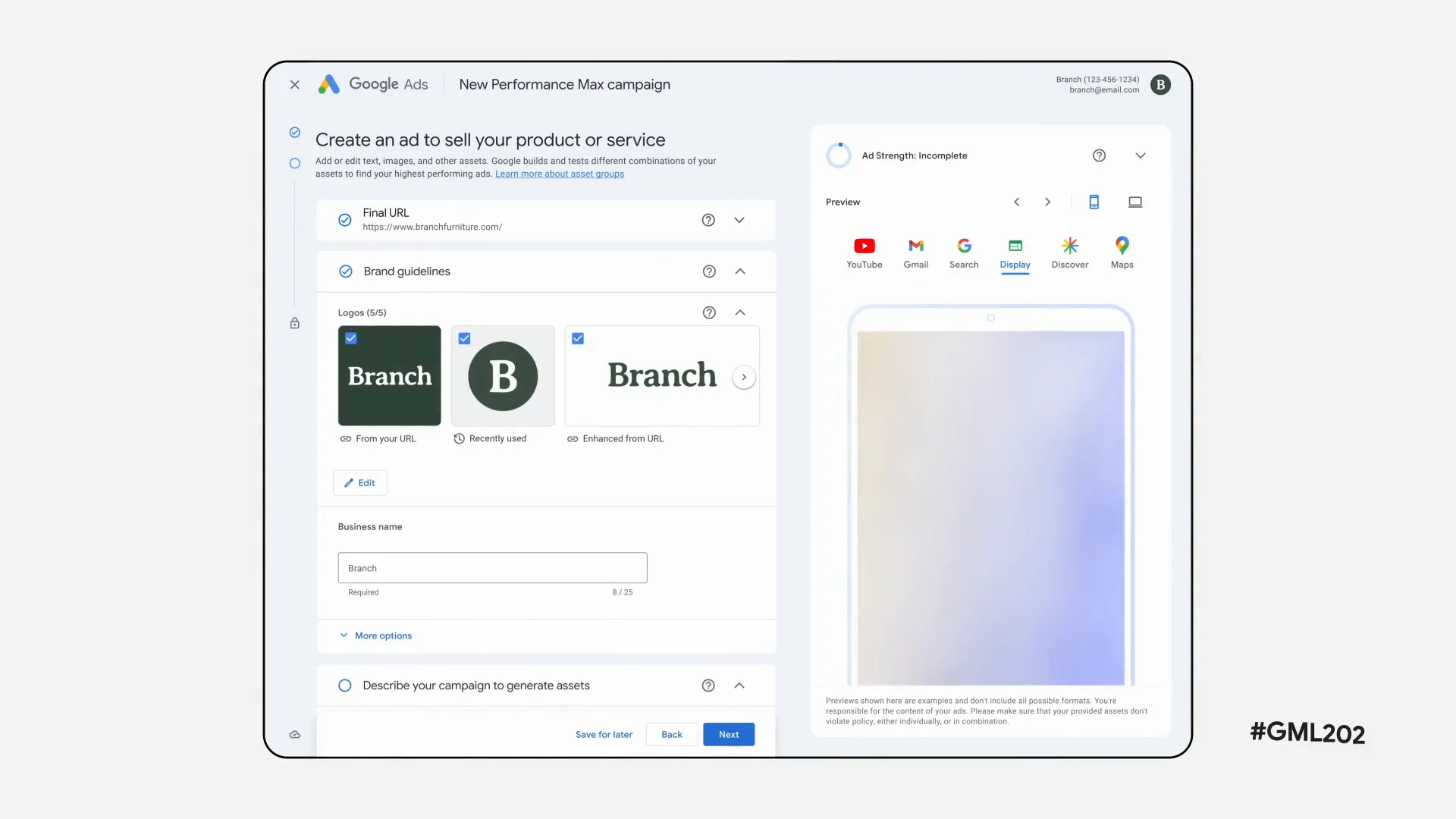
New brand controls allow advertisers to upload brand guidelines, including colors, fonts, and imagery, ensuring AI-generated creatives align with brand identity. For example, Branch Furniture demonstrated how AI can generate multiple product images with different backgrounds and styles instantly, saving time and boosting creativity.
Performance Max campaigns powered by AI have shown significant improvements, with advertisers experiencing a 6% average increase in conversion rates when ad strength reaches excellent levels.
Video and Visual Storytelling: Driving Engagement
Video remains a powerful medium for storytelling and engagement. TAG Heuer shared how embracing diverse video formats on YouTube, supported by Google’s AI, increased search lift by 71% and ad recall by 52%, while reducing costs.
YouTube’s AI-powered video marketing campaigns enable brands to connect with audiences across Instream, Feed, and Shorts formats, driving awareness and consideration. Short vertical videos have been particularly effective, increasing watch rates by over 40%, and new interactive ad stickers will soon enhance engagement further.

Power Pair: Combining Search and Performance Max
Google introduced the concept of the “Power Pair,” combining AI-driven search campaigns with Performance Max to maximize conversions and return on ad spend (ROAS). Advertisers using this approach have seen conversion rates or value increase by 27% or more at similar costs, making it a must-try strategy.
Additionally, Google announced “profit optimization” as a new bidding goal, allowing advertisers to maximize profits rather than just revenue. This feature uses product cost and conversion data to drive smarter bidding decisions, with early adopters seeing an average 15% profit increase.
Adoption and Mindset: Preparing for an AI-Driven Future
While the technology is rapidly evolving, success depends on mindset shifts. Marketers are encouraged to view themselves as change management officers, breaking down organizational silos and integrating teams, budgets, and metrics across channels to meet complex customer journeys.
Examples from Adidas and Shutter illustrate how cross-channel AI adoption improves customer engagement, marketing efficiency, and financial accountability. The keynote also highlighted how agencies play a critical role in helping brands navigate AI marketing’s complexities.
Getting Started with AI Essentials and Accelerate
To support advertisers on their AI journey, Google launched AI Essentials, a practical action checklist integrated into Google Ads’ OptiScore. This tool provides personalized recommendations that can boost campaign conversions by 15% when OptiScore improves by 10%.
Additionally, the Accelerate platform offers a one-stop shop for AI resources, currently available in the U.S., India, and Germany, with global rollout planned soon. Marketers are urged to start now, as inaction is the only mistake in the fast-moving AI era.
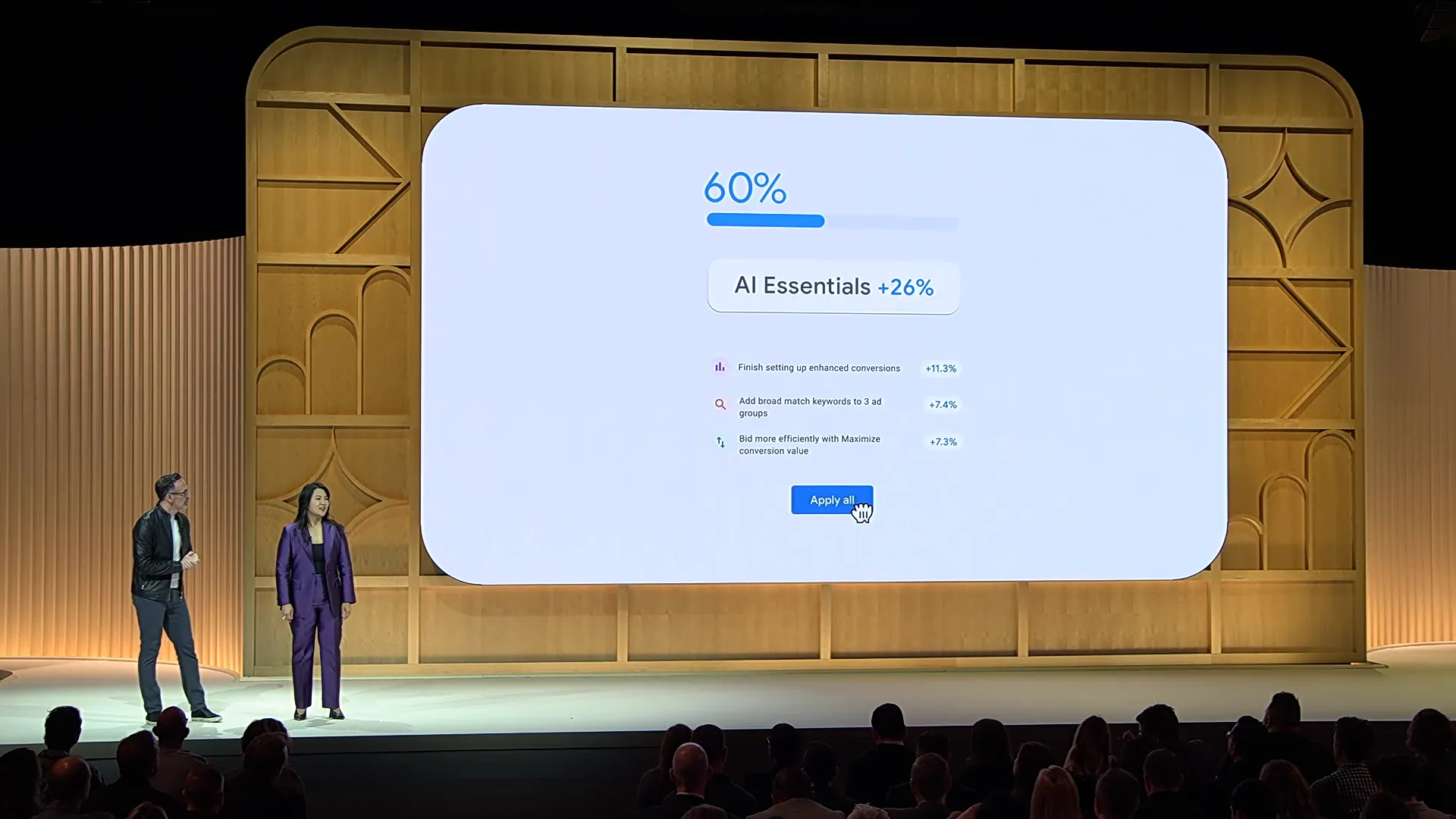
Conclusion: The Dawn of a New Marketing Era
The Google Marketing Live 2024 keynote paints an exciting picture of AI’s transformative impact on digital marketing. From smarter search and innovative creative tools to immersive shopping experiences and robust data management, AI is empowering businesses to connect with consumers more effectively than ever before.
Businesses that embrace these technologies and adopt a growth mindset will unlock new opportunities for efficiency, creativity, and profitability. As Google continues to innovate responsibly, marketers have a powerful partner to navigate the evolving landscape and shape the future of advertising.
Start your AI-powered marketing journey today and experience the magic of Google AI driving your business forward.
www.leadsdubai.com (Article Sourced Website)
#Google #Marketing #Live #Keynote #Unlocking #Future #AIPowered #Advertising
